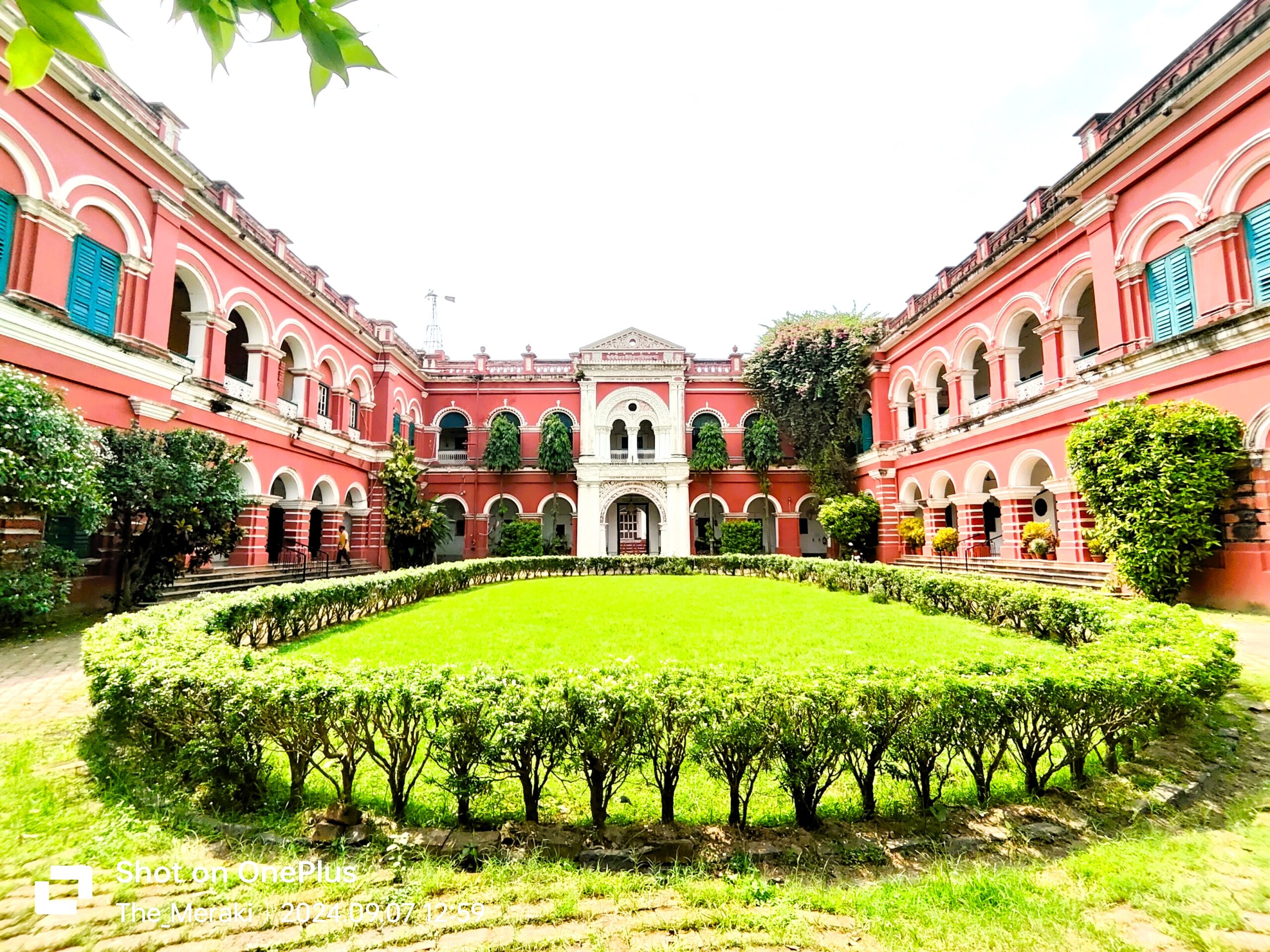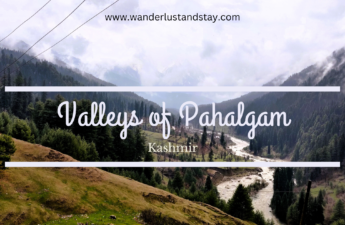As the weekend approached, I found myself craving an escape from the city’s relentless pace. The fast-paced city life of Kolkata, with its never-ending rush and pressure, was starting to feel suffocating. I needed a breather—a place where time slows down, and life returns to a simple, peaceful rhythm. That’s when I decided to visit the Itachuna Rajbari, a centuries-old palace tucked away in the quiet countryside, just a few hours from the city. As a lover of heritage tourism, I’m always drawn to places that have stories etched into their walls, where history whispers through the corridors and the air feels thick with the past. So, when I finalized my weekend trip with family to the Itachuna Rajbari, I knew this was exactly the kind of place my soul had been searching for.
Location of the Rajbari
The 250-year old Itachuna Rajbari is tucked away in the serene countryside of West Bengal. It is located in a quaint little town near Pandua, of the Hooghly district. Here is how you can reach the Rajbari via different option:
- By Road: The Itachuna Rajbari is around 70-80 km from Kolkata and takes around 2-3 hours to reach by car via Delhi Road and SH-13.
- By Train: The nearest rail station is Khanyan. There are regular Burdwan bound mainline trains or Pandua/Memari local trains from Howrah station that reach Khanyan railway station. It takes around 1.5 hours by train. From Khanyan, you can avail a local autorickshaw/e-rickshaw to reach the Rajbari.
- By Air: The nearest airport is the Netaji Subhas Chandra Bose International Airport. From there, you can avail a cab/taxi to reach the Rajbari.
Find Itachuna Rajbari on Google Map here.
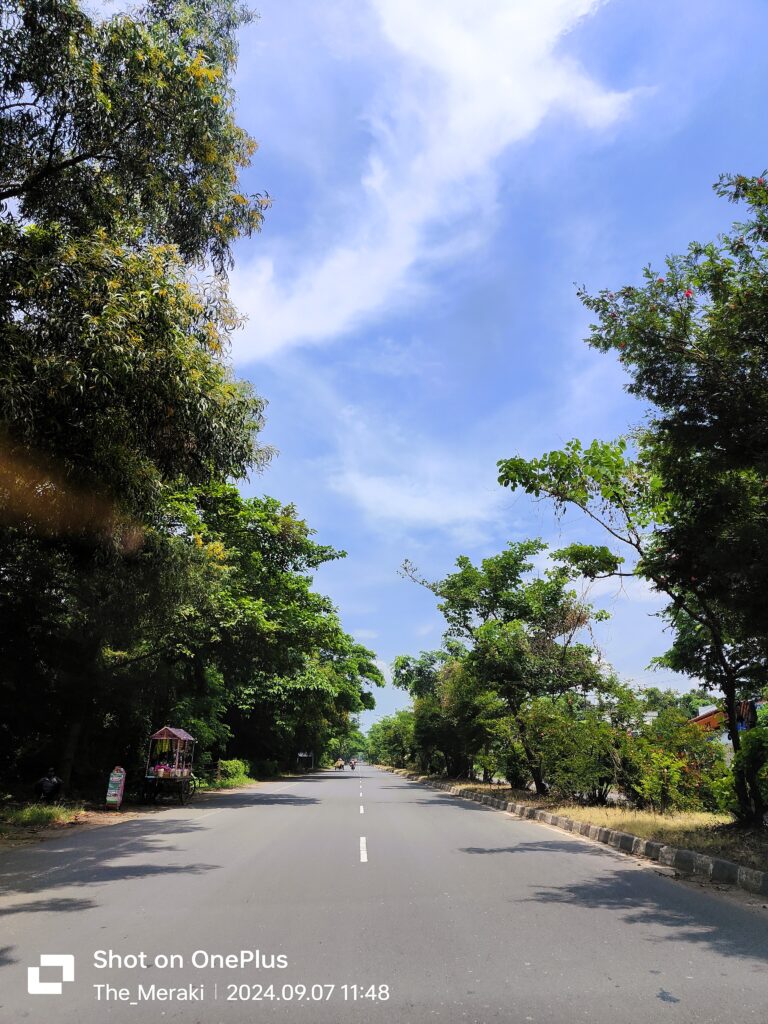
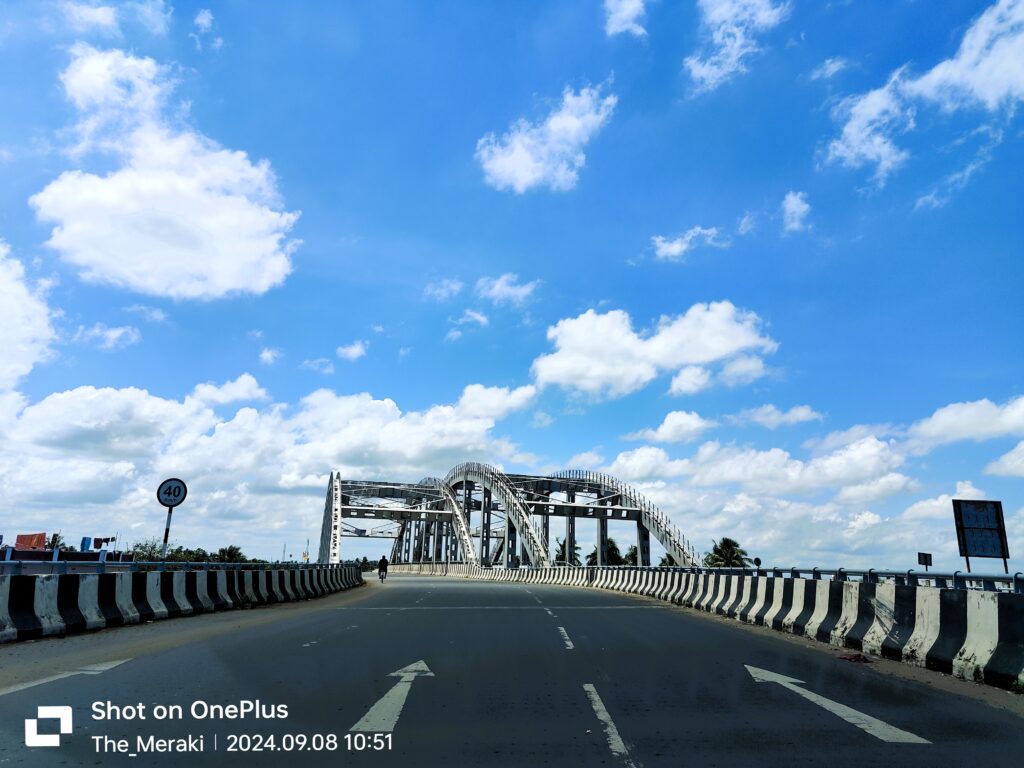
A Glimpse into the History of Itachuna Rajbari
As we approached the grand entrance of the Itachuna Rajbari, it felt like we have traveled back in time to the colonial era. The sprawling estate, with its red and white magnificent façade—an awe-inspiring blend of traditional Bengali and colonial architecture immediately caught our attention.
The origin of Itachuna Rajbari can be traced back to British Era when the Maratha’s attacked and plundered Bengal repeatedly to collect 1/4th of the tax amount that was to be paid by the Nawab of Bengal (Sub-e-dar), Bihar and Odisha (Orrisa). This tax was also called “Chauth”. The Maratha warriors were named as “Bargees” by the people of Bengal. The Bargees attacked under the the guidance of Bhaskar Pandit and Raghuji Bhosle from 1742-1752. After the assassination of Mi Habib, the Bargees gained control over Orrisa and stopped the attacks. As a result, many such Bargees settled in and around Bengal instead of returning to their homeland and started their own business/trade. One such Bargee group was the Kundans.
The Kundans, later took the surname of “Kundu” established “Bargee Danga” – the former name of Itachuna Rajbari in the year 1766. Hence, The Itachuna Rajbari was built by the ancestors of Shri Safallya Narayan Kundu.
After the abolishment of the Raj-culture by the Govt. of India, the Rajbari fell in the hands of disrepair. The present inheritors of the Kundu family lovingly restored the heritage mansion which now operates as a heritage hotel, offering its guests the unique opportunity to experience Bengal’s aristocracy in a centuries-old palace while enjoying modern-day comfort.
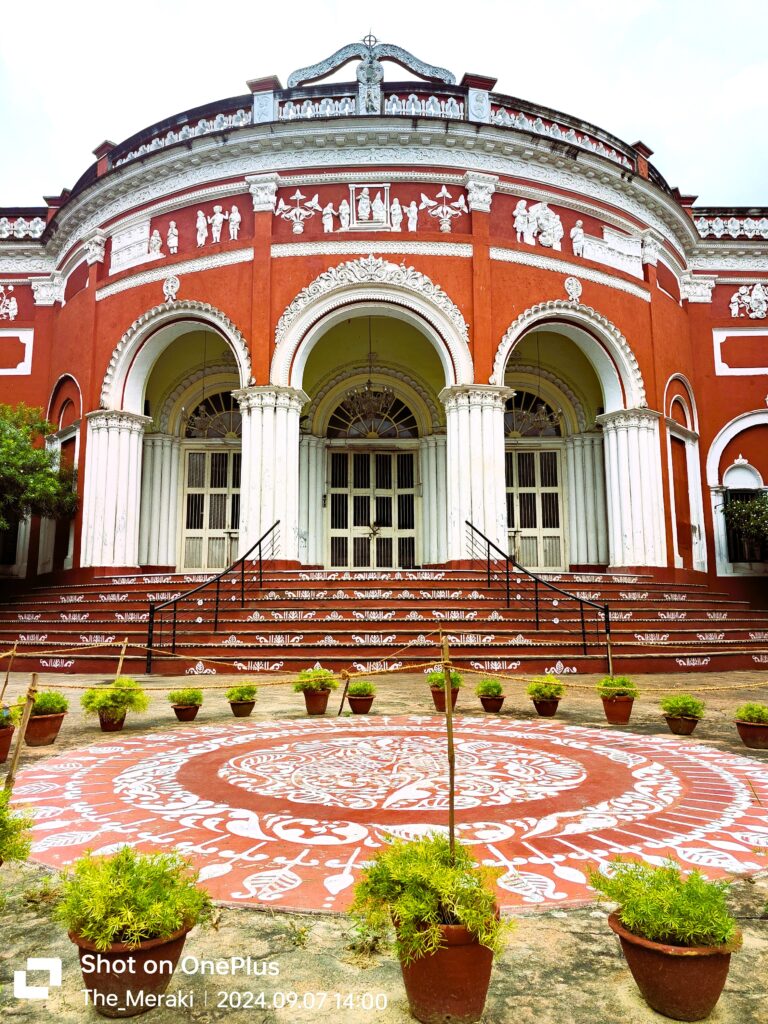
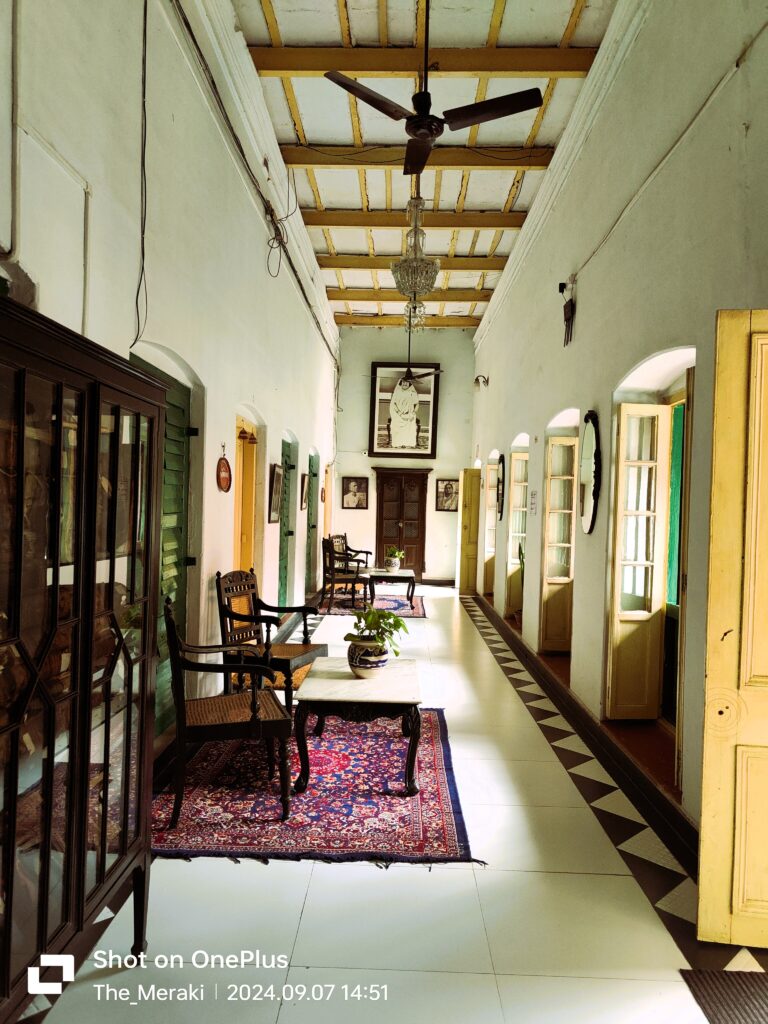
Experiencing the Rajbari: A Journey Through Time
Itachuna Rajbari spans approximately 20 bighas or around 7 acres of land. This expansive area includes the palace itself, gardens, ponds, and other surrounding features, contributing to its serene and grand atmosphere.
The Rajbari has 3 prominent segments:
- Bahir Mahal: This translates to “Outer Palace” or “External Palace” and refers to the public and semi-public areas of the Rajbari. The Bahir Mahal is designed to include reception areas or “Baithak Khana” and rooms to accommodate guests, gatherings, and formal events.
- Andar Mahal: This translates to the “Inner Palace” and refers to the private quarters of the palace. This section was typically reserved for the royal family and inaccessible to guests and outsiders during the zamindari era. It served as the inner sanctum where the women of the family, along with close relatives, lived and conducted their daily activities. The Andar Mahal houses the bedrooms and personal living spaces. A significant part of the Andar Mahal was the Zenana, a secluded area designated for the women of the household.
- Thakur Dalan and Dev Mahal – This section of the mansion is the most prominent section of the Rajbari. The grand courtyard is the heart of the palace, where ceremonies and festivites are celebrated.
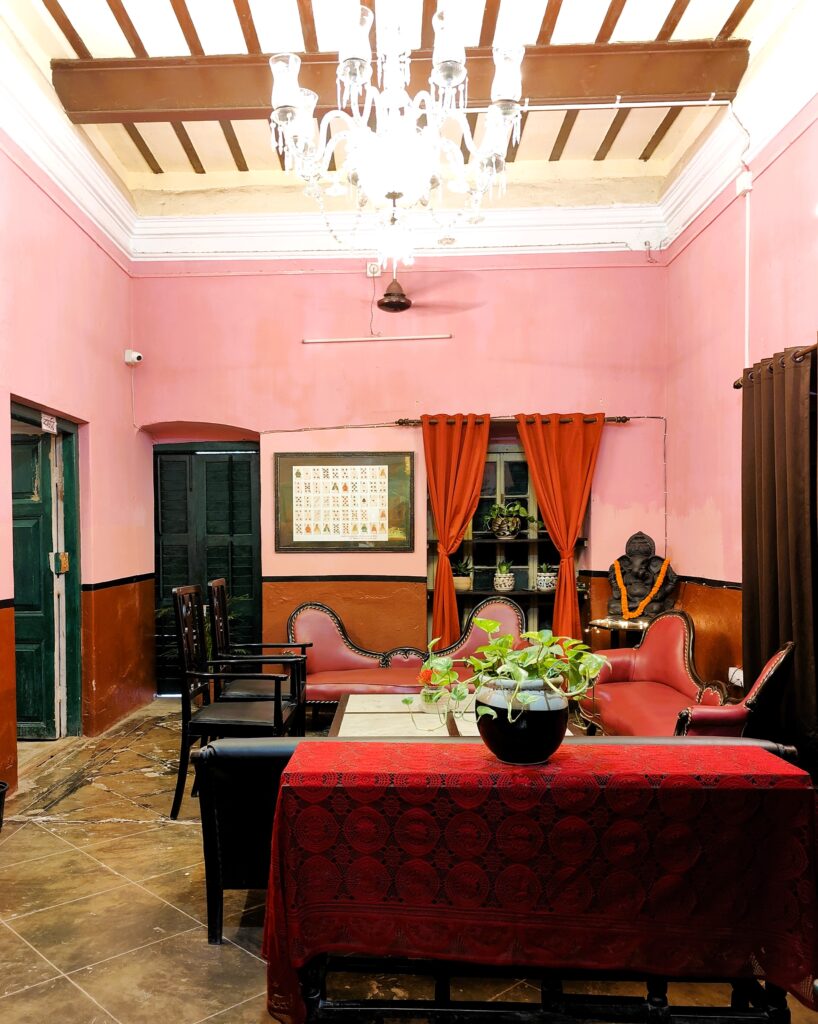
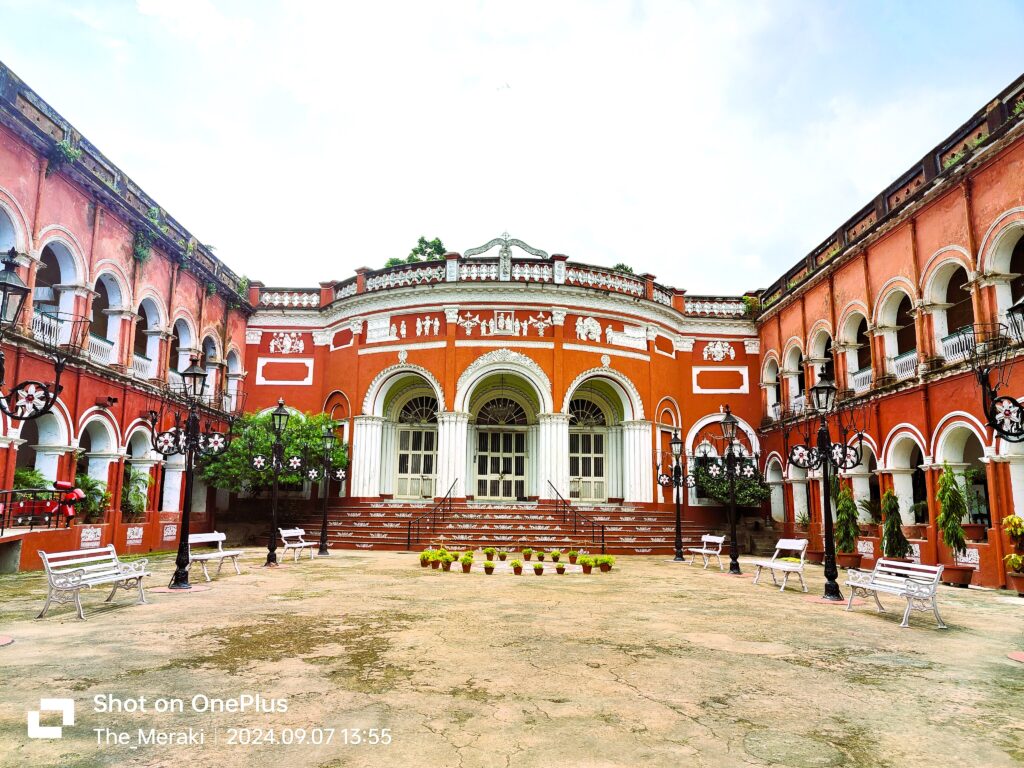
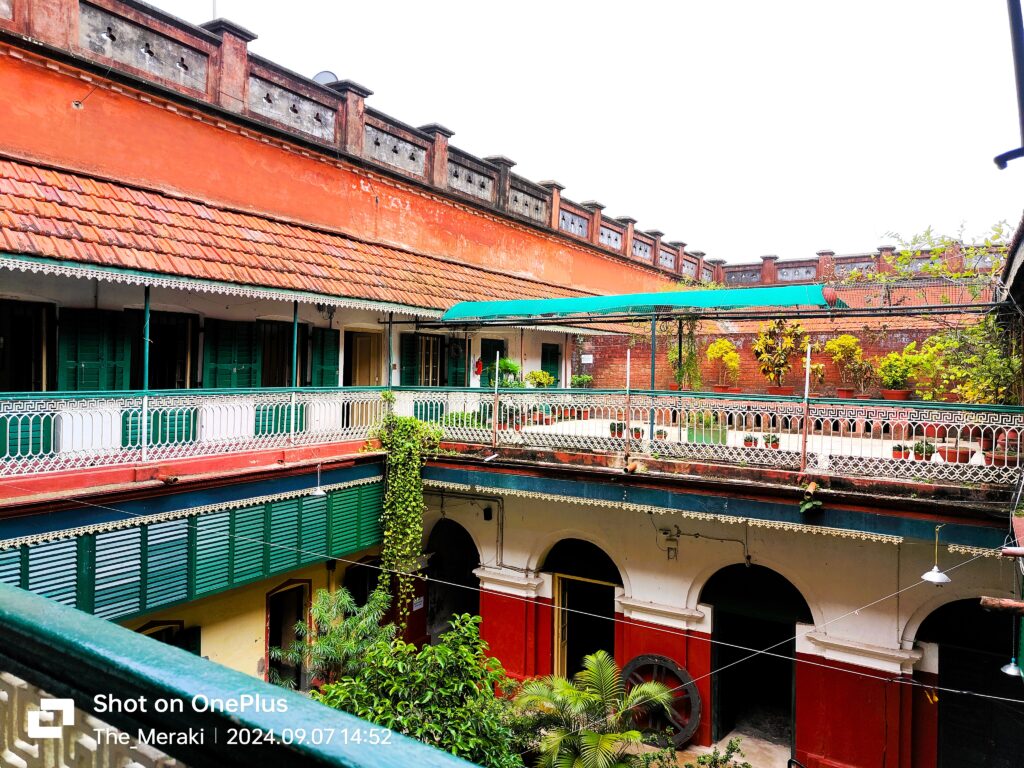
The Magnificent Architecture and Décor
The real charm of any heritage property lies in its carefully preserved heritage. The rooms, each tastefully decorated with period furniture, transport you to a different time. High ceilings, antique wooden furniture, and vintage chandeliers give each room a distinctly regal vibe. While the rooms retain their old-world vintage charm, they are equipped with all modern amenities to ensure a comfortable stay.
There is a range of room options to choose from — grand suites to more modest yet charming rooms. Each room within the mansion is named uniquely after a relation (like “Thakuma” means grandmother, “Pishi” means aunt) and the mud-houses are named after flowers (eg: Aparajita, Madhabilata, Kanaklata and Jhumkolata). Each room share a view of either the palace grounds or the surrounding countryside.
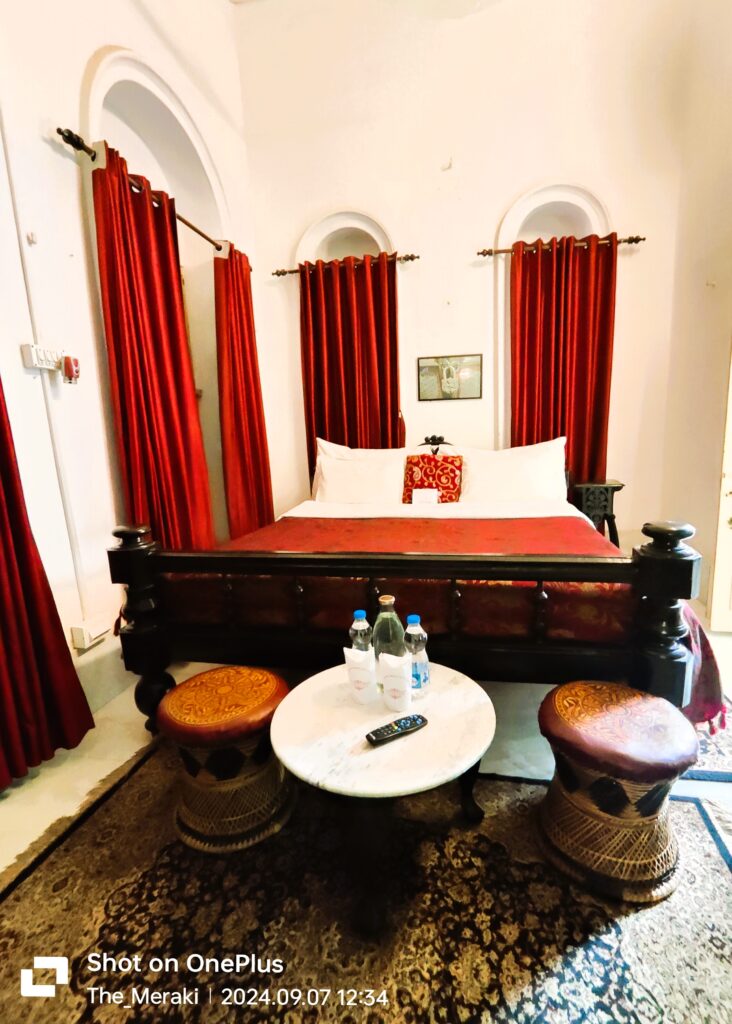
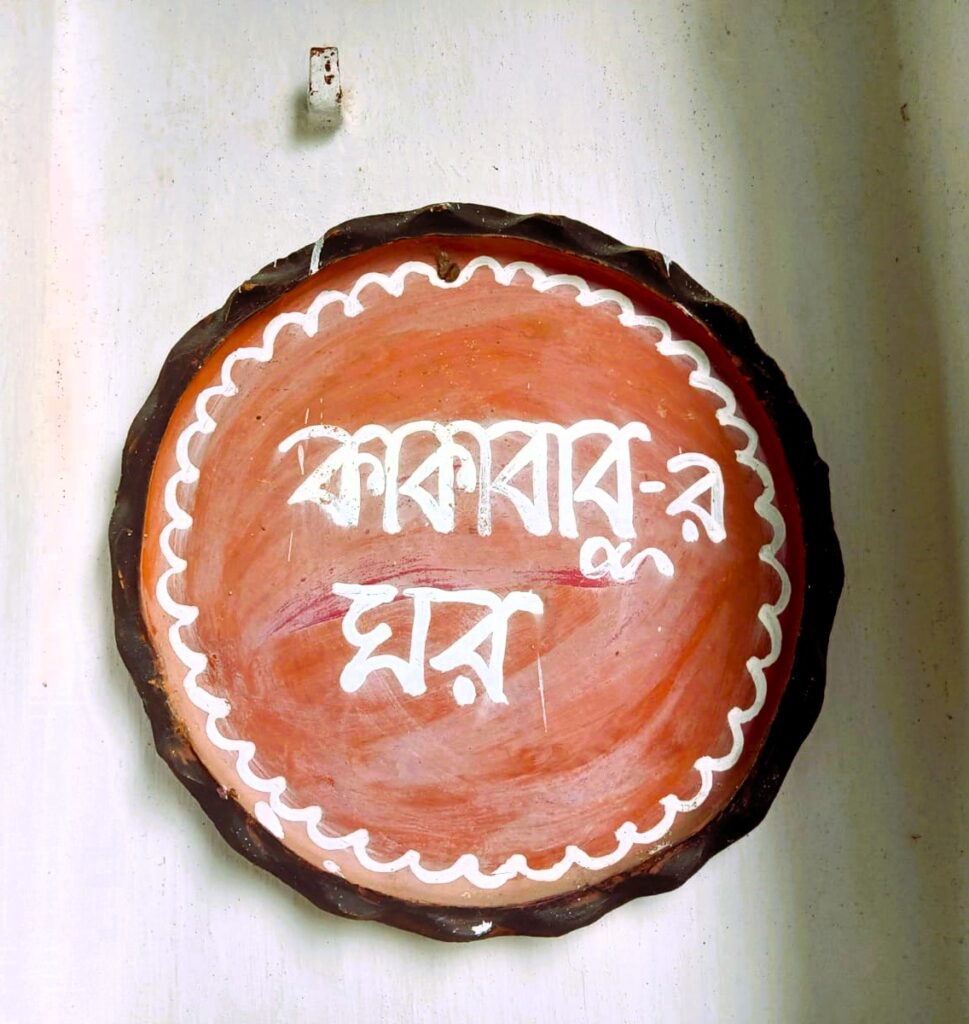
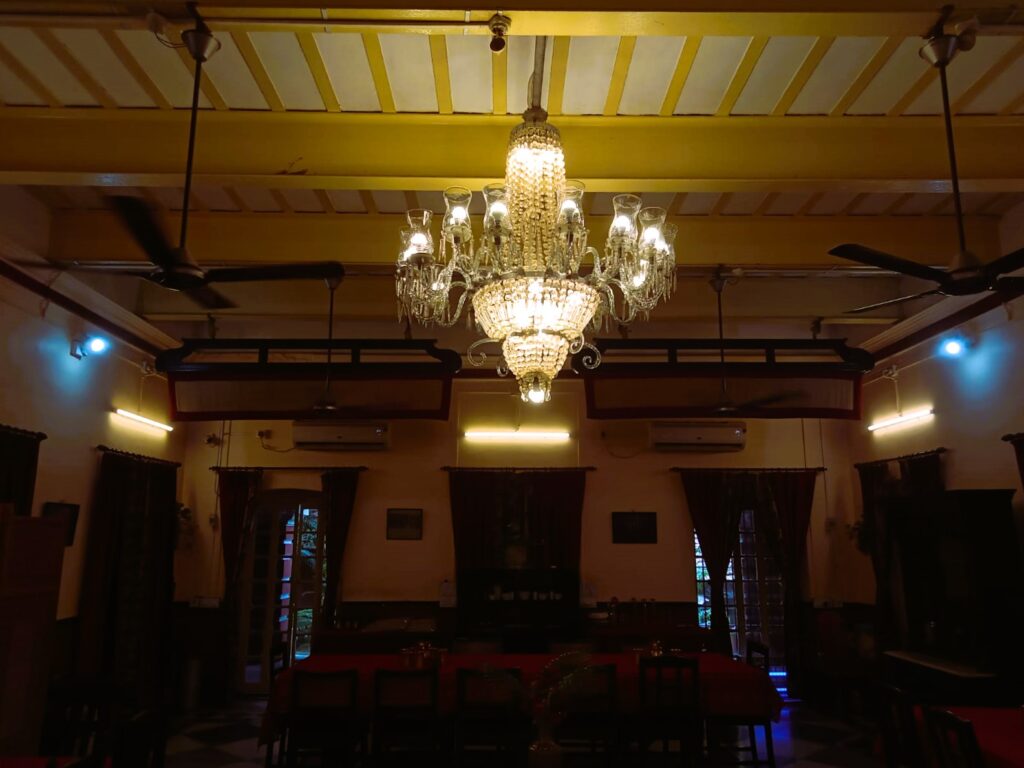
A Taste of Royalty: Traditional Bengali Cuisine
The dining at the Itachuna Rajbari is a very royal experience. The meals are quintessentially Bengali cuisine. Meals are prepared with locally sourced ingredients, and you get to feast on traditional Bengali delicacies like shorshe ilish (hilsa fish in mustard gravy), kosha mangsho (slow-cooked mutton), and mishti doi (sweet yogurt).
I ordered the meal thali which is INR 600 per person. It includes a variety of Bengali delicacies like Luchi, Sabzee, Pulao, etc. Any additional items can be ordered from the Ala Carte menu.
The food is served in shiny brass utensils in a classic old-fashioned dining hall. The dining cost is very pocket friendly which adds to the overall experience.
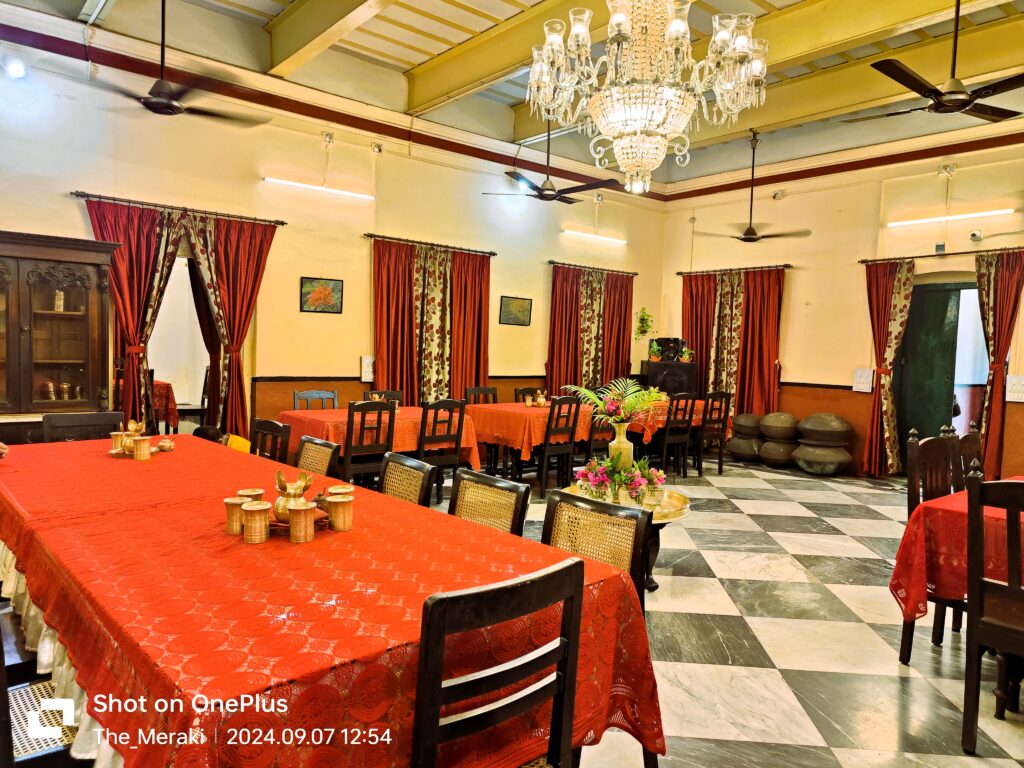
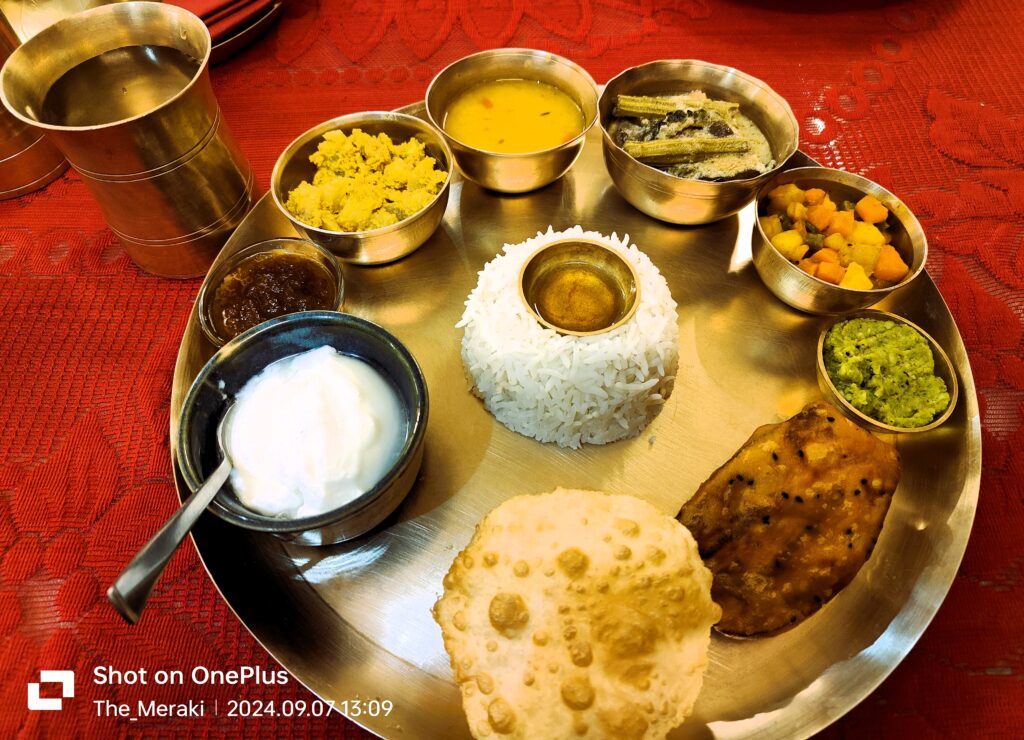
Exploring Itachuna: What to Do
Apart from soaking in the royal experience, there are plenty of other activities to do at Itachuna Rajbari.
- Heritage Walks: The Rajbari authorities organize daily guided tours in the evening from 5-7 pm. The guide narrates the fascinating stories about the palace’s history, the Kundu family’s role in the region, and how the Rajbari was restored to its present form. During the very interactive session, the guide also gives a visual tour of the Rajbari by guiding the guests through the vintage doors and staircases.
- Cultural Performances: During the evenings and on certain occasions, the Rajbari authorities organizes cultural performances like Baul music or folk dances, giving you a glimpse into Bengal’s vibrant cultural scene.
- Divine Evening Arati: The evening arati at the temple is undoubtedly the highlight of a stay at the Rajbari. The air fills with the divine aroma of incense, accompanied by the rhythmic sounds of bells, cymbals, and drums. The chanting of mantras and the flickering of candles on the temple steps combine to create a truly celestial ambiance.
- Wake-up To The Sound of Flute: Every morning, the guests are woken-up by the flutist playing earthy and pleasing tunes on his flute which serves as a gentle wake-up call.
- Explore The Property: The vast acres of land gives ample opportunity to put on the explorer hat and roam around the property. There is a pond behind the mansion, a dilapidated temple dedicated o Lord Shiva located on the opposite side of the main gate, mud houses etc.
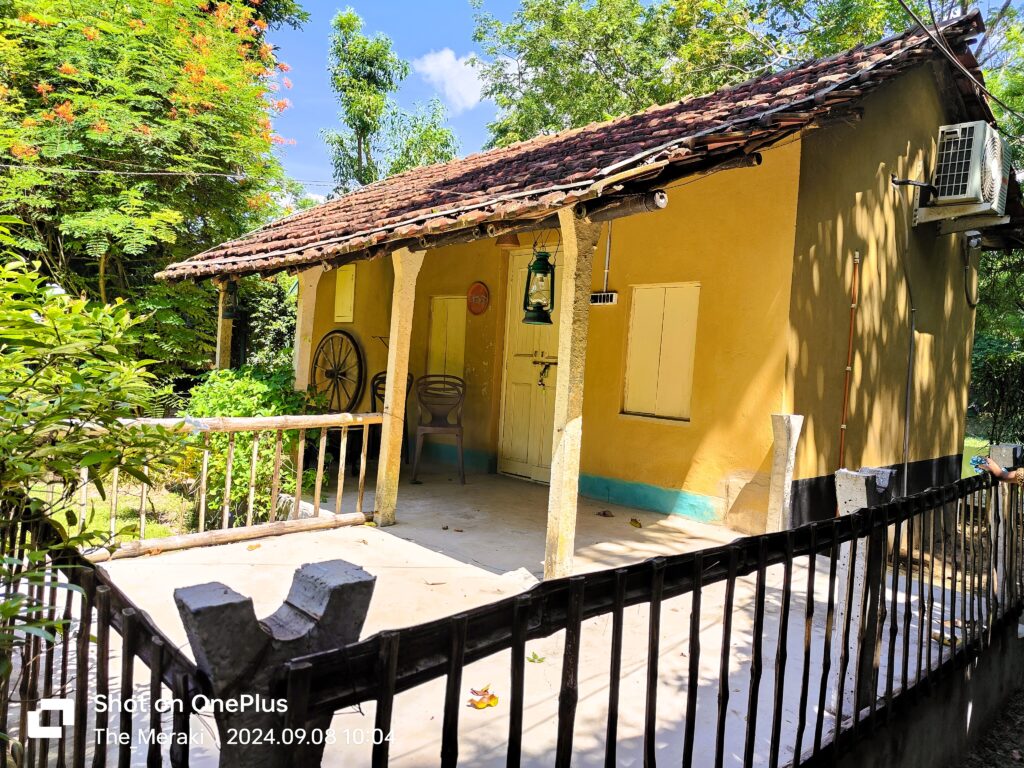
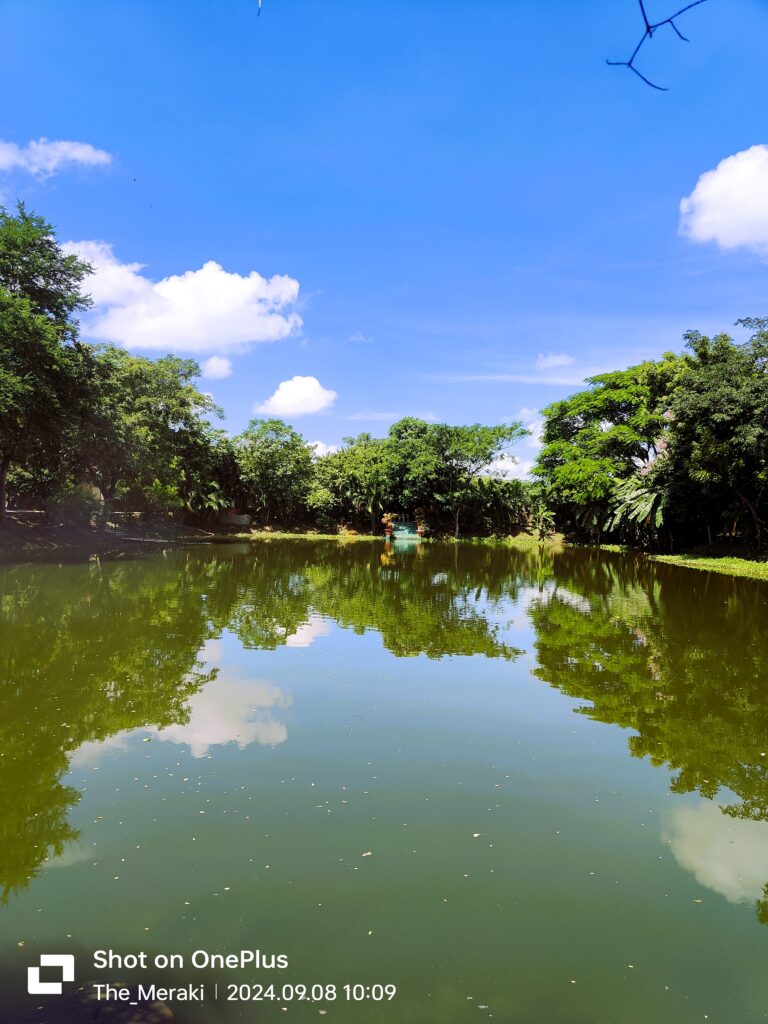
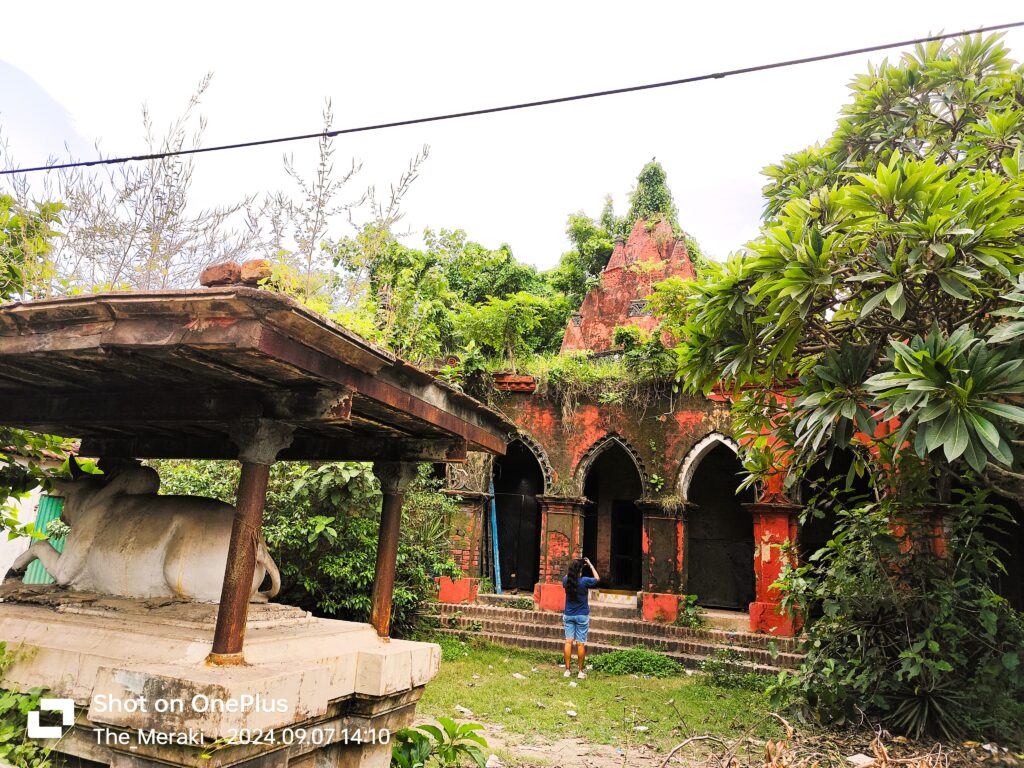
Important Things to Remember
There are a few house rules that needs to be followed as Itachuna Rajbari is a private property.
- The gates close at 11.00 pm at night hence we could not stroll the property at night
- Like all other hotels, there are deadlines for breakfast, lunch and dinner
- The heritage walk and shandhya arati is also time-bound. We missed a part of the heritage walk because we reach30 mins late
- The rooms cannot be booked via any travel portal. You need to email info@itachunarajbari.com for room booking
Best Time to Visit
While Itachuna Rajbari is welcoming year-round, the winter months (October to February) are the most pleasant for a visit.
Nearby Attractions
- Hooghly Imambara
- Bandel Church
- Chandennagar
- Guptipara Terracotta Temples
- Hangseswari and Ananta Basudev Temples of Bansberia
